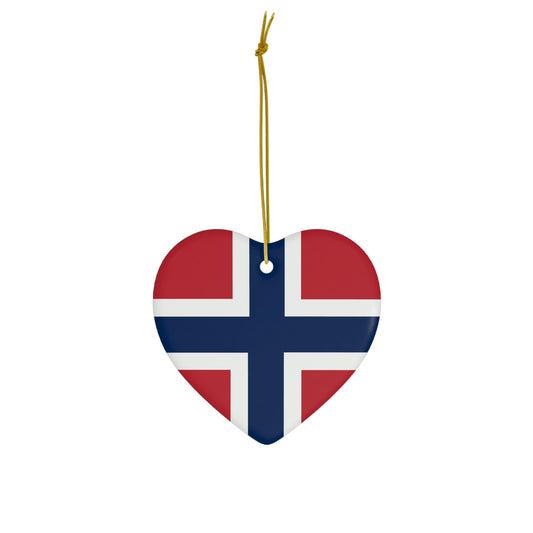Russefeiring: Norway's Ultimate Graduation Celebration
In the heart of Norway's spring, as high school draws to a close, there blooms a tradition unlike any other—Russefeiring. This nearly month-long festivity is a rite of passage for Norwegian teens, marked by an exuberance that dwarfs even the most spirited American graduation parties. Russefeiring, or "Russ" as it's colloquially known, is an eclectic mix of wild parties, daring challenges, and a collective embrace of freedom that stands as a final farewell to adolescence.
The Essence of Russefeiring
Russefeiring is a celebration that pushes the boundaries of conventional partying into the realm of the extraordinary. Imagine a scene where the air is filled with laughter, music, and the spirit of youth, set against the backdrop of Norway's stunning landscapes. From copious amounts of alcohol to public displays of revelry that might include nudity, the festivities are not only socially accepted but encouraged. This is a time when the norms are paused, allowing for a month of uninhibited joy and camaraderie among graduating students.
The Origins of Russ
The Russ tradition has its roots in the early 20th century but has evolved significantly over the years. Originally, it was a celebration for university students but has since become associated primarily with high school graduates. The term "Russ" itself is derived from the Latin word "cornua depositurus," which means "about to lay aside the horns," symbolizing the transition from student life to adulthood.
Tracing its origins back to 1905, Russefeiring initially celebrated the distinction of graduates through the adoption of red caps, inspired by visiting German students. During this period, students don distinctive overalls or jumpsuits, typically in red or blue, corresponding to their area of study. These outfits become a canvas for collecting souvenirs, signatures, and symbols of completed challenges throughout the celebration period.This simple act of wearing red or, later, blue hats has evolved into a complex tradition encompassing custom attire, such as the overalls known as "Russebukse," and the adoption of "Russ" names.
Modern Celebrations
Today's Russefeiring is a meticulously planned affair, often years in the making. Students, with financial contributions from their parents, invest in large buses transformed into mobile party headquarters, complete with custom designs and state-of-the-art sound systems. These buses, manned by hired drivers to ensure safety, become the epicenters of Russefeiring, traveling across the country to partake in festivals and parties. The gatherings, especially in campgrounds and public spaces, are legendary for their intensity and sense of community.
Activities and Challenges
The Russ period is marked by a series of playful challenges, concerts, and gatherings, where students earn various tokens for their hats based on the challenges they complete. These challenges range from the harmless and humorous to more daring acts, all designed to foster camaraderie and create lasting memories.
The Famous "Russeknuter" Challenges
Integral to the Russ experience are the "Russeknuter," a series of dares that range from the absurd to the outrageous. These challenges, often involving feats of endurance, humor, and sometimes public embarrassment, add a layer of legend to the festivities. From consuming beers in unconventional manners to creative public displays, the "Russeknuter" are a testament to the creativity and boldness of the participants.
Russ Cards
Another hallmark of the Russ celebration is the distribution of "Russ cards," personalized trading cards that students exchange with each other and give to children who eagerly collect them during the May 17th parades. These cards often feature humorous quotes, photos, and contact information, adding a personal touch to the festivities.
Russ on May 17th
On May 17th, while the nation dons traditional attire and celebrates Norway's Constitution, the Russ also join in the national pride. Despite their reputation for revelry, Russ students participate in the day's events with respect and enthusiasm. They march in parades, join in the singing of national anthems, and add to the festive atmosphere with their energy and decorated vehicles.
Controversy and Celebration
While Russefeiring is embraced as a hallmark of Norwegian culture, it is not without its detractors. The celebration's excesses often lead to public disturbances, with the police and health officials addressing issues related to alcohol consumption, violence, and health risks. Despite these challenges, the spirit of Russefeiring remains undimmed, with the understanding that it represents a pivotal moment of transition for Norwegian youth.
Amidst the Revelry, Life Goes On
Perhaps the most astonishing aspect of Russefeiring is that it unfolds even as school continues. Students are expected to attend classes, though attendance and attentiveness can wane as the celebrations progress. This juxtaposition of responsibility and revelry encapsulates the essence of Russefeiring—a celebration of youth and freedom before the mantle of adulthood is fully assumed.
The Significance of Russ
The Russ celebration is more than just an extended party; it represents a rite of passage for Norwegian youth. It marks the transition from adolescence to adulthood, celebrating both individual achievements and the collective journey of the graduating class. The timing with May 17th underscores a deeper connection between personal milestones and national identity, as students step into adulthood with a sense of belonging to a larger community.
Balancing Tradition and Modernity
In recent years, discussions around the Russ tradition have touched on issues of safety, inclusivity, and the balance between celebration and responsibility. Efforts to ensure that Russ celebrations remain a positive and safe experience for all participants reflect broader societal values of care, respect, and community.
Conclusion
The Russ tradition is a vibrant and integral part of Norwegian culture, especially significant in its juxtaposition with the solemn and patriotic celebrations of May 17th. It embodies the joy of youth, the anticipation of future endeavors, and a deep-rooted sense of national pride. As Norway looks forward, the Russ tradition serves as a reminder of the country's dynamic culture, capable of honoring its heritage while embracing the spirited contributions of its younger generations.











